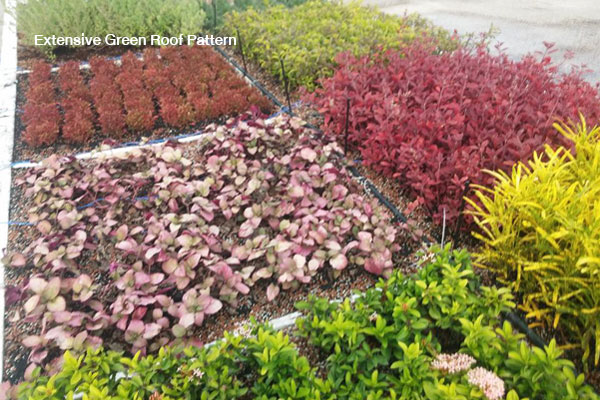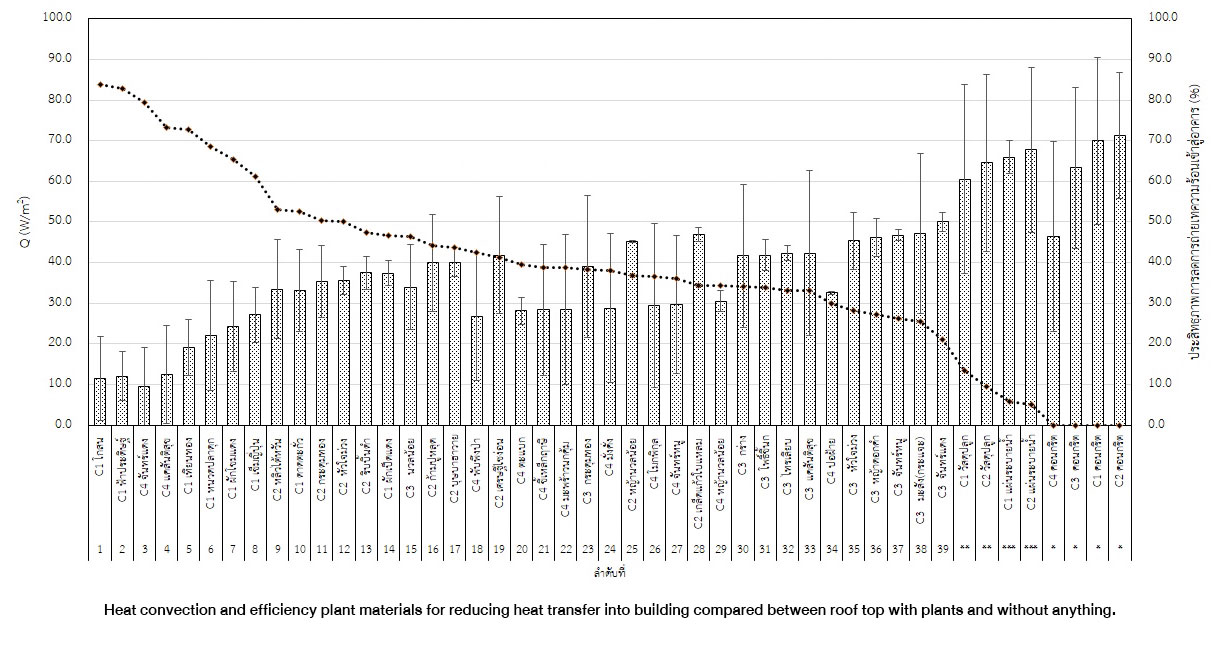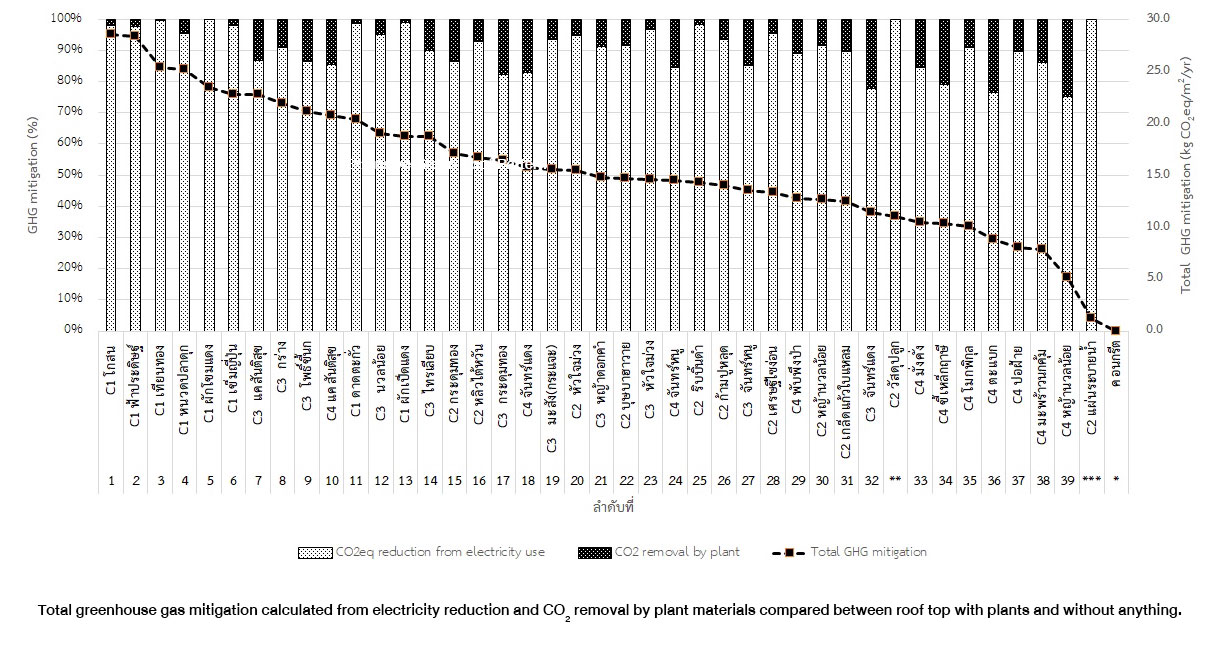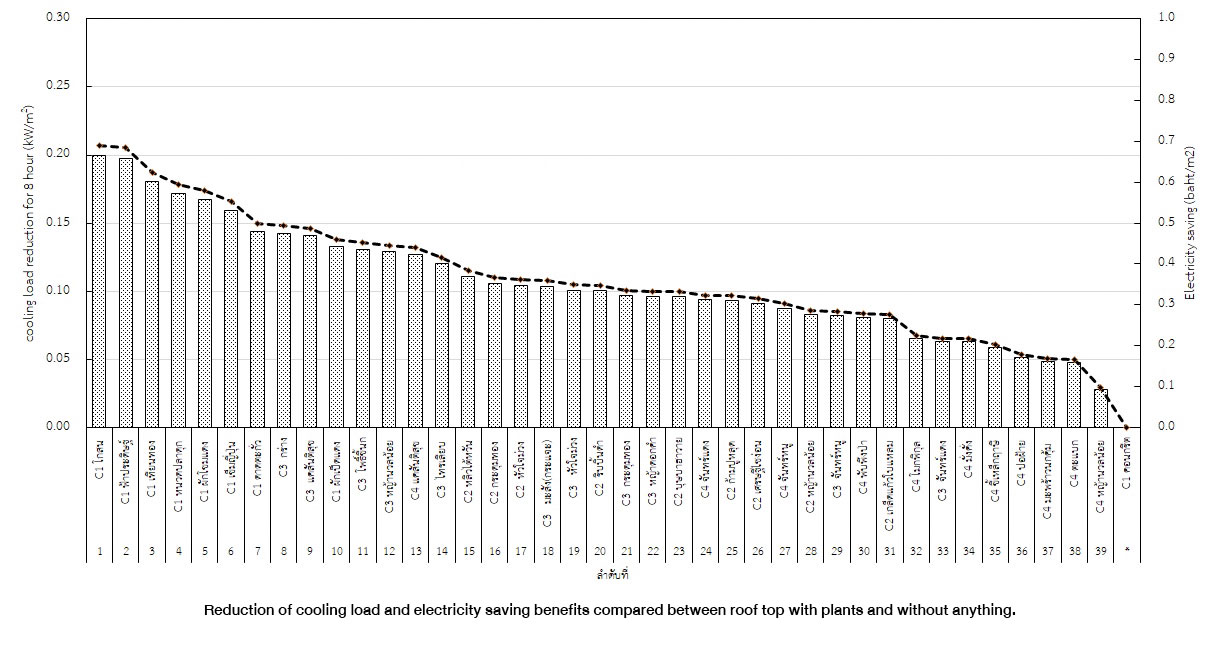Co – benefits of extensive green roof for saving electricity and mitigating greenhouse gases emission.
Faculty of Environment and Resource Studies, Mahidol University



Co – benefits of extensive green roof for saving electricity and mitigating greenhouse gases emission.
Faculty of Environment and Resource Studies, Mahidol University
Project Title:
Plant materials for extensive green roof to conserve energy and reduce carbon footprint.
Research Title:
Co – benefits of extensive green roof for saving electricity and mitigating greenhouse gases emission.
Researcher (s):
Dr.Boonlue Kachenchart
Asst. Prof. Dr.Gunn Panprayun
The extensive green roof is an alternative method for conserving energy in large building. However, the database of plant materials for reducing heat convection from top roof with and without plants is inadequate.
The objective of this research is to identify the suitable plant materials for extensive green roof to conserve energy and reduce carbon footprint. There were 4 treatments including 1) top roof with plants, 2) with only substrates, 3) with synthetic fiber and water drainage sheets, and 4) without anything (control).
The results showed that the plant plots had roof surface temperature lower than the control unplanted plots at the range of 2.76 ºC – 12.23 ºC and reduced the heat that could transfer to the building by 20.98-83.73%. Thus, the plant plots could reduce electrical energy use by reducing the load of air condition by 0.1997 kW h/m2/day and saving the electricity cost by 0.69 baht/m2/day.
The carbon dioxide removal efficiency of the roof garden was 0.04-3.01 0.04 kg CO2/m2. When combined with the reduction of indirect greenhouse gas emission via electricity reduction, the roof garden reduced the total greenhouse gas emission at 5.19-28.4639 kg CO2eq/m2/year depending on plant materials.
When considered the ability to reduce the transferred heat from roof to building, the survival rates and growth under extreme weather and low maintenance condition, and the rates of greenhouse gas mitigation and removal, the most suitable plant materials for a low maintenance roof garden were Dracaena cochinchinensis, Santisukia kerrii, Dracaera Kawcesakii, Codiaeum variegatum (L.) and Convolvulus mauritianus Boiss. The first three plant materials were originated from Krast topography.
In conclusion, the surface temperature of roof with plants was significantly lower than the naked concrete roof. However, the efficiency of each plants was varied due to the physiological characteristics such as leaf area, form, and canopy layer. These characteristics influences the capacities of each plant on heat absorption and heat reduction via evaporative cooling effect.




Key Contact Person:
Dr.Boonlue Kachenchart
Faculty of Environment and Resource Studies, Mahidol University
+66 2441 5000 ext. 1219
boonlue.kac@mahidol.ac.th